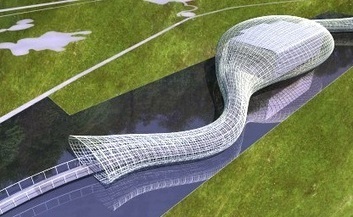I discovered recently that Rem Koolhaas was a screenwriter before he became an architect. He describes the moment that his journey into architecture began when on a trip to Moscow he was exposed to soviet architecture and Russian Constructivism (Malevich, Tatline and Lissitzky etc). He observes that their project proposed a radical reconfiguration, a re-ordering of everyday life through the vocabulary of building. Just as a screenwriter prescribes the words and actions of a character in a series of spaces, so architects, with their arrangements of stairs, living room, kitchen and so on, write a script for our lives.
Composition, with its etymological root in the act of combination, is for me, an activity which is common to all creative endeavour. In the most general sense I believe that it implies the imposition of structure onto substance. Whether the substance in question is material or immaterial (i.e. thoughts and concepts) or the structure orderly or chaotic is secondary; what remains common is the combinatory act. If one thinks about composition in the way that Koolhaas implies, i.e. as a systematic recombination of themes, metaphors, spaces, colors, dialog, shapes, notes etc. until a result is achieved that one finds meaningful or desirable, then it becomes a very powerful and intellectually liberating concept that can be applied to any discipline.
Thinking about composition as being synonymous with design, painting or writing etc, i.e. that it is a shorthand for creativity, also provides me with the impetus to work in collaboration. I find that dialectic engagement with people from other disciplines who bring an entirely different intellectual tool box to the same problem can generate results where the whole is greater the sum of its parts...



 Your new post is loading...
Your new post is loading...







